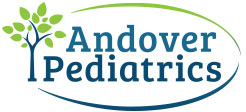Menstrual Periods
Children with a uterus will experience their first menstrual cycle (or “period”) about 2–3 years after breast development begins. Breast development begins with small lumps, called breast buds, beneath the nipples. Also, kids will typically experience a large growth spurt the year before they begin menstruation. Most kids get their first menstrual period between the ages of 12 and 13, but there is a wide range of what is considered a normal age to begin menstruating. Some kids will get their first period at age 9 and others will not start menstruating until they are 15. Many factors, including body weight, genetics, and involvement in sports, influence the age at which someone begins menstruating. Typically, you will only grow another 1 to 2 inches after menstruating begins. Notify your health care provider if you notice breast buds or pubic hair developing before the age of 9 or do not notice any changes occurring by age 13.
Timing of Menstrual Cycles
Menstrual cycles are timed from the first day of one period to the first day of the next period. There is normally about 28 days between cycles; however, a range of every 21-35 days is considered normal. Menstrual cycles last about 3-7 days. Bleeding is normally heavier at the beginning of a cycle and becomes lighter toward the end. It is common for periods to be irregular for the first year or two after menstruation starts. Timing of periods can be affected by stress, changes in bodyweight, diet, travel, exercise, and illness. Remember, irregular periods can be a sign of pregnancy in sexually active girls.
Menstrual Cramps
After beginning to have periods, people may experience cramping in their lower abdomen and/or back before or during their period. These cramps may be accompanied by headache, lightheadedness, diarrhea, constipation, nausea, and/or vomiting. These symptoms may occur a few days before menstruation begins and may last through the duration of the period. The symptoms generally start to improve a few days after a period begins. It may be helpful to use a heating pad and take a warm bath to help relieve symptoms. It is also important to drink plenty of fluids, to eat well, and to get plenty of rest to help/relieve cramping and related symptoms. Over the counter medications like ibuprofen (Motrin and Advil) or Aleve (naproxen) may be helpful and can be safely taken for a few days to help with cramping symptoms. Make sure you follow the directions on the packaging and take as directed.
Premenstrual Syndrome (PMS)
PMS may occur up to 2 weeks before a period begins, and symptoms subside once menstruation starts. PMS can be associated with feeling sad or depressed, mood swings, or irritability. People with PMS may also experience breast soreness, bloating, acne, food cravings, increased thirst or hunger, constipation, or diarrhea. Symptoms of PMS may be relieved by exercise, sleep, drinking plenty of fluids, avoiding salt and caffeine, and eating nutritious foods. There are medications available to help with PMS if the above methods are not effective.
When to Notify your Healthcare Provider:
- If you notice changes associated with puberty (pubic hair and breast buds) before age 9 or if you do not notice these changes by age 13.
- If periods come more often than every 21 days or less often than every 35 days.
If periods last longer than 7 days or less than 3 days. - If menstrual cramps are not relieved by over the counter medication and/or interfere with school attendance and other activities.
- If mood swings, depression, or irritability last longer than a week before a period begins and/or are interfering with activities of daily life and relationships.
If you have concerns related to menstruation, keep a diary. Keep track of periods for a few months and write down the date each period starts and the date it ends. Also, write down any symptoms related to menstruation, for example, heavy flow, cramping/pain (how severe, where it is, what it feels like), emotions, etc. Remember to keep track of premenstrual symptoms as well. Your healthcare provider will be better able to help you if he/she can understand all of the symptoms.

